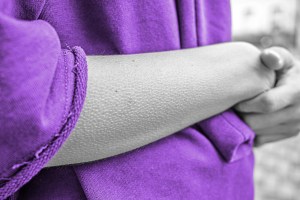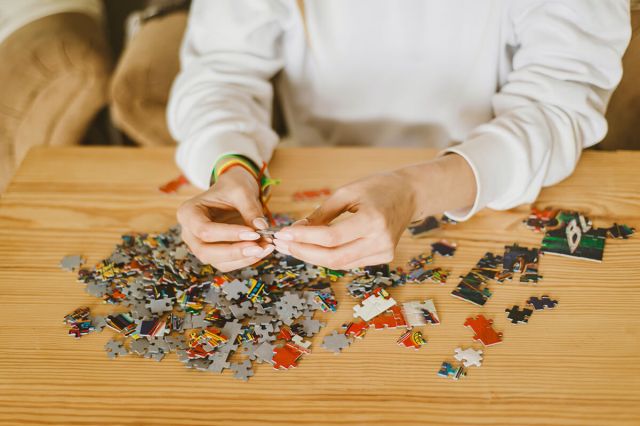
Start With the Right Setup
Before you get your pieces out, consider where you’re setting up. You of course want a flat surface that’s big enough to fit the size of the completed puzzle, but it’s also helpful to have enough room to spread out and see all the pieces as you go.
In Reader’s Digest, Alfonso Alvarez-Ossorio, the president of the World Jigsaw Puzzle Federation, recommends a white or light-colored work surface to help reflect light for a better view of the pieces’ details. In fact, professional competitions tend to use tables or mats with vinyl-plastic surfaces so the pieces can be moved around more easily.
Good lighting is also essential. Avoid floor lamps that can cause shadows and hinder your ability to clearly see the pieces. Plenty of natural light is ideal, but a bright overhead light or table lamp are also helpful.
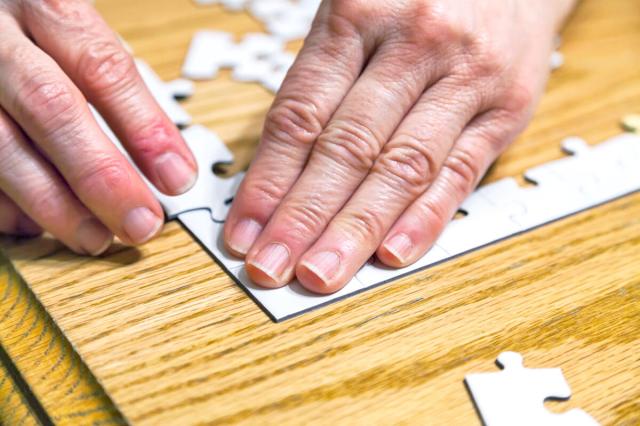
Sort Strategically
Now that you’ve got your workspace, it’s time to get puzzling. After all the pieces are out of the box, turn them all face up. From there, one of the most commonly used strategies is to sort and assemble the edge (frame) pieces first — these are easier to spot thanks to their distinctive flat sides.
Tammy McLeod is a competitive puzzler who holds the Guinness World Record for fastest time to complete the Guinness World Records Hasbro puzzle, assembling 250 pieces in just nine minutes and 58 seconds. While she doesn’t always opt to complete the outside frame first, she agrees that, in most cases, that’s usually the easiest way to start.
McLeod told Slice of MIT that sorting, whether by edge, color, or other distinctive features such as patterns or letters, helps the puzzle come together faster. Don’t fret about having perfectly organized piles of pieces; think of it more like mise en place when you’re cooking: getting everything in place before you begin will help create a clearer path forward.
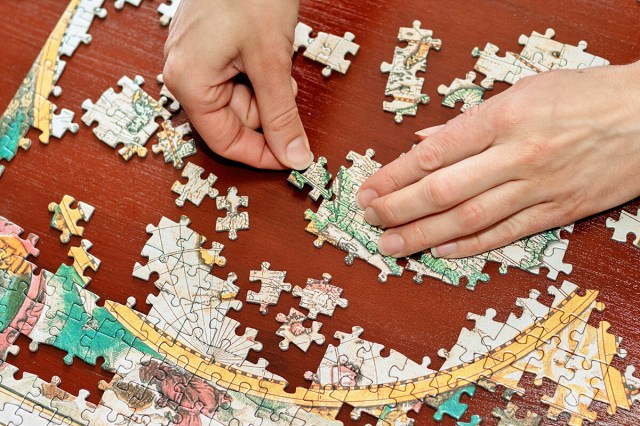
Work in Sections
With your outer edge done and the rest of your pieces in loosely arranged groups, you can start working on smaller sections of the puzzle’s middle. Some experts believe it’s easier to work from the outside of the frame in. Others, such as nine-time British Jigsaw Championships winner Sarah Mills, look for those previously sorted pieces with distinctive lettering, faces, colors, or patterns that can fit together.
Once you’ve completed a small section, place it within the frame roughly where it will go in the completed puzzle; eventually, you’ll be able to connect these sections to the larger picture and keep working out from there. Be sure to also keep an eye out for changes in color gradients to more easily connect what can be trickier areas of the puzzle’s picture, such as the sky or the ground.
More Interesting Reads
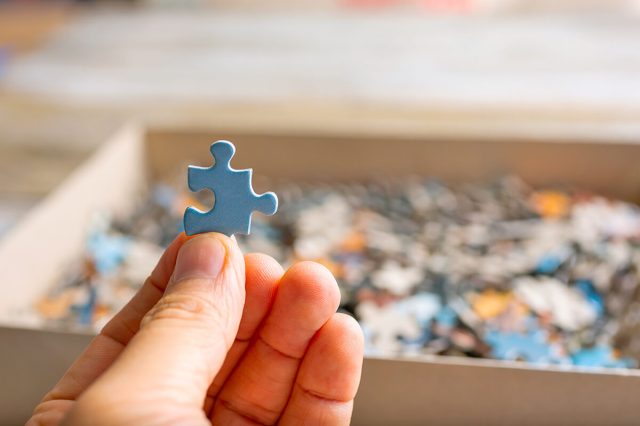
Shape Matters
Colors and patterns aren’t the only things that matter: Each puzzle piece has little extensions and indentations, often called knobs (or tabs) and holes (or blanks). Speedy puzzlers learn to scan systematically, knowing they’re looking for a two-knobbed, two-holed piece with a bit of red on the edge, for instance, and filtering out everything else. The ability to see the puzzle as a whole and not just as individual pieces comes more easily to some than others, but with practice, you can train your eyes to take several factors into account at once.
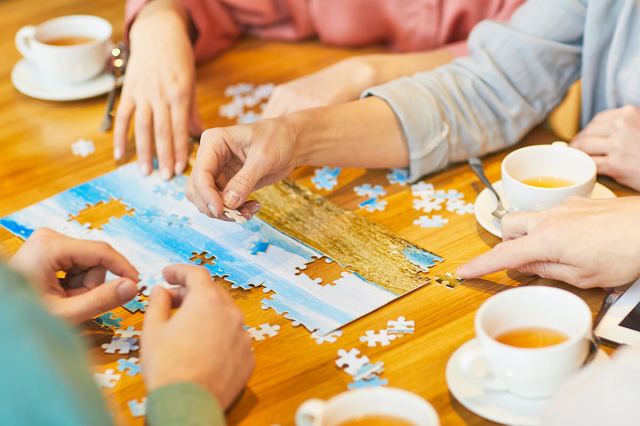
Take a Break
It may sound counterintuitive, but one trick to solving a jigsaw puzzle faster is to step away from it for a bit, especially if you’re stuck. Not only can a break rest your eyes and reset your brain, but it can also give you a fresh perspective. Jodi Jill, a professional puzzle maker and the founder of National Puzzle Day, told Reader’s Digest that shifting your focus can also help push you through tough spots.
Rather than zeroing in on patterns or colors, try observing the grain. By tilting your head and looking at the pieces at an angle, you may be able to spot tiny lines or bumps; these reveal the direction of the grain of paper or wood fibers, which typically run in one direction. Aligning pieces along that grain may help you fit them together more easily.
Of course, jigsaw puzzles come in about as many varieties as there are people who do them. While not every strategy will work for everyone, these tips can help speed up your solving skills whether you’re tackling a 100-piece rectangular landscape or a 5,000-piece abstract design. And like any other skill, the more you practice, the better — and quicker — you’ll get.


